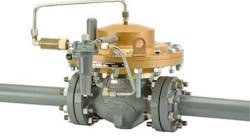For downstream energy businesses, there is nothing more important than avoiding unplanned asset outages. The industry is already at the mercy of unpredictable fluctuations in commodity prices, and break-ins can worsen the situation by creating major unexpected financial and operational challenges for facility leaders.
Depending on the scope of the outage, an unplanned shutdown can cost operators tens of thousands of dollars per hour in wasted time and lost profit opportunities. When a break-in occurs, safety, security, environmental, and economic factors all come into play and need to be managed carefully. Some unexpected shutdowns are unavoidable, as when a natural disaster causes a power failure that forces production to stop. However, other break-ins can be caused by factors that are within the company’s control, such as equipment malfunctions and human error that create safety issues. Turnaround maintenance (TAM) programs can help reduce these kinds of break-ins by identifying areas of concern and coordinating corrective action, but they are not always run as efficiently as they could be.
To maximize uptime and avoid a negative impact on the bottom line, leaders should assess how TAM-related work orders and asset management procedures are functioning in practice. Heavily regulated businesses like refineries and plants already have to follow a set of rigorous safety and compliance procedures, but inefficiencies hidden within these processes can slow down the TAM process. Some companies have invested in intelligent asset management technologies to continuously monitor equipment performance over the last several years, but making sense of the reams of data they collect is easier said than done.
With a more comprehensive, real-time view of how TAM programs function across people processes and technology, leaders can take a more proactive approach to help their teams get ahead of unplanned downtime.
Hidden TAM hurdles
Turnaround maintenance is generally planned months or even years in advance, and when the time comes, it’s critical to have the right materials and the right people available to complete scheduled work orders. For example, if a work order is issued but the team member with the expertise needed to complete it is not on shift at the scheduled time, or not at the correct job site, the entire process could be delayed until a staffing solution is found. Similarly, if the right person is available to complete a scheduled repair but the materials needed to do so are not available or will not arrive in time, that creates a costly bottleneck. If work orders end up needing to be rescheduled to a later date, that raises the chances of a break-in because the asset is not receiving the attention it needs in a timely manner.
Materials management, workforce planning and procurement are all distinct workstreams, but they form a complex web of business processes that all intersect during TAM. During the planning and scheduling process, operational leaders need to work closely with the people responsible for each element of the program to ensure work orders are scheduled and executed as efficiently as possible. It’s also important for leaders to have insight into order management and fulfillment when planning TAM, as fluctuations in demand can create openings for a turnaround schedule with limited financial impact.
Technology’s role in optimizing TAM
Insight into the technology layer is another key element of TAM planning best practices for leaders. The growth of intelligent asset management systems and digital twins have allowed more companies to collect a continuous stream of data on how machinery is performing. Those data are meant to help leaders predict when an asset is likely to break down or malfunction, so they can make more informed decisions about how to prioritize and schedule maintenance. However, it's not enough to have millions of data points about how a piece of equipment is functioning. What makes the data useful is how it feeds into the entire TAM planning process. Without a system layer that can make sense of patterns in the data and automatically trigger maintenance actions in other departments, operators are not getting the most out of their technology investments.
In a TAM program that takes several days or weeks to complete, small deviations from planned processes can quickly add up to wasted time and budget. Deviations can be hard to identify when working with so many complex systems, but automation can help leaders find and fix them before they become a bigger problem.
Some companies have turned to process mining to ensure their TAM planning and work order execution processes are set up as effectively as possible. Process mining technology acts much like an MRI for a business, uncovering hidden issues and opportunities to improve efficiency. It sits on top of existing technologies, drawing connections between ERP tools and intelligent asset management systems like Maximo and SAP. Process mining also allows operators to take technology insights a step further by surfacing recommendations for how to take action and remedy process deviations.
With more cross-system visibility, operators can better prioritize maintenance activities, and automate the coordination between materials management, labor procurement and any other departments involved in executing TAM work orders.
Post-TAM reflections
Even with a detailed plan, it’s always possible that unexpected issues will arise during scheduled maintenance. For that reason, once TAM programs are complete, leaders must also take a step back and evaluate how the process went. Operators can compare projected and actual costs for labor and materials, and calculate overall downtime to get a benchmark for future turnarounds. They can also collect feedback from employees and other department heads to make further process improvements.
Final thoughts
Keeping facilities up and running safely and efficiently is operators’ most important responsibility. To avoid unplanned shutdowns and resulting financial losses, leaders must start with optimizing planned outages through more effective TAM programs. Technology can help, but only if it provides actionable, timely insights beyond data points in a spreadsheet.
With real-time process transparency, operators can make smarter, more proactive decisions about facility maintenance that extend the life of critical equipment, make employees more productive and protect the bottom line.
Vijay Desiraju is Celonis’ Global Energy Industry Lead. He is responsible for guiding clients to billions in cost reduction opportunities across the Celonis Oil & Gas vertical. He works closely with client teams to drive value across the oil and gas value chain. Prior to Celonis, Vijay spent 14 years as a partner at Accenture, where he advised energy and utilities clients on digital transformation programs across the enterprise.


